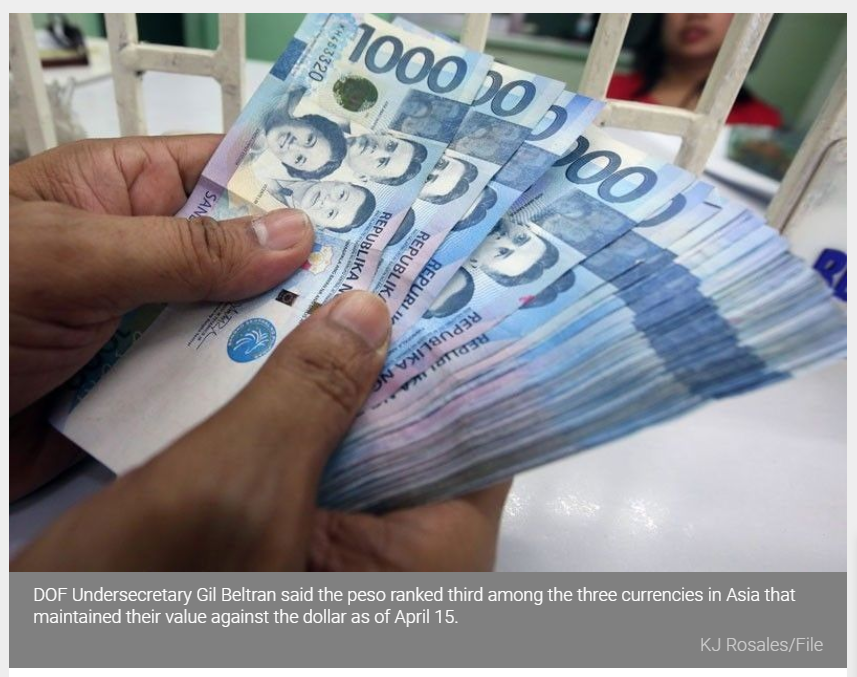Philippines: Peso remains stable despite headwinds — DOF
MANILA, Philippines — The peso has remained stable despite the havoc caused by the coronavirus pandemic on the global economy and financial markets, according to the Department of Finance.
DOF Undersecretary Gil Beltran said the peso ranked third among the three currencies in Asia that maintained their value against the dollar as of April 15.
In particular, Beltran said the peso as of April 15 appreciated by 0.04 percent to 50.63 against the dollar from the end-2019 level of 50.66.
“During the year, the peso appreciated by 0.04 percent relative to the dollar, ranking third behind the Japanese yen which appreciated by 2.05 percent and Hong Kong dollar which appreciated by 1.28 percent. All the other currencies depreciated against the dollar,” Beltran said.
“The peso-dollar exchange rate also remains stable throughout the period, its coefficient of variation at 0.26 percent, ranking first among 12 regional currencies and lower than the 1.94 percent Asian average,” he said.
This was despite the rising risks in the global economy amid the spread of coronavirus disease 2019 or COVID-19, the collapse of global stock markets, the crash in Latin American currencies and the downgrading of credit ratings of many economies, Beltran said.
According to the DOF’s chief economist, the peso’s stability may be attributed to the country’s strong balance-of-payments (BOP) position and rising gross international reserves.
“Strong foreign exchange inflows from exports of services, remittances, income from investments abroad, direct foreign investments and foreign borrowing all contributed to the strong BOP position. These in turn boosted the confidence in the Philippine peso,” he said.
In 2019, the country had a BOP surplus of $7.84 billion, which is equivalent to 2.2 percent of gross domestic product. This is the highest surplus recorded since 2012.
Meanwhile, the GIR reached $88.2 billion as of end-February, up by 6.5 percent year-on-year. This is equivalent to 7.8 months worth of imports of goods and services, and 5.1 times larger than the country’s short-term external debt.
Going forward, Beltran said keeping the country’s fiscal deficit manageable and implementing monetary measures would help maintain investor confidence in the Philippines despite the impact of the pandemic.
“Strong macroeconomic fundamentals support the country’s financial position. The BOP surplus in 2019 was the highest in recent history. Manageable budget deficits and prompt adjustment of monetary settings in response to current developments help maintain investor confidence,” he said.
Source: https://www.philstar.com/business/2020/04/21/2008565/peso-remains-stable-despite-headwinds-dof


 English
English




